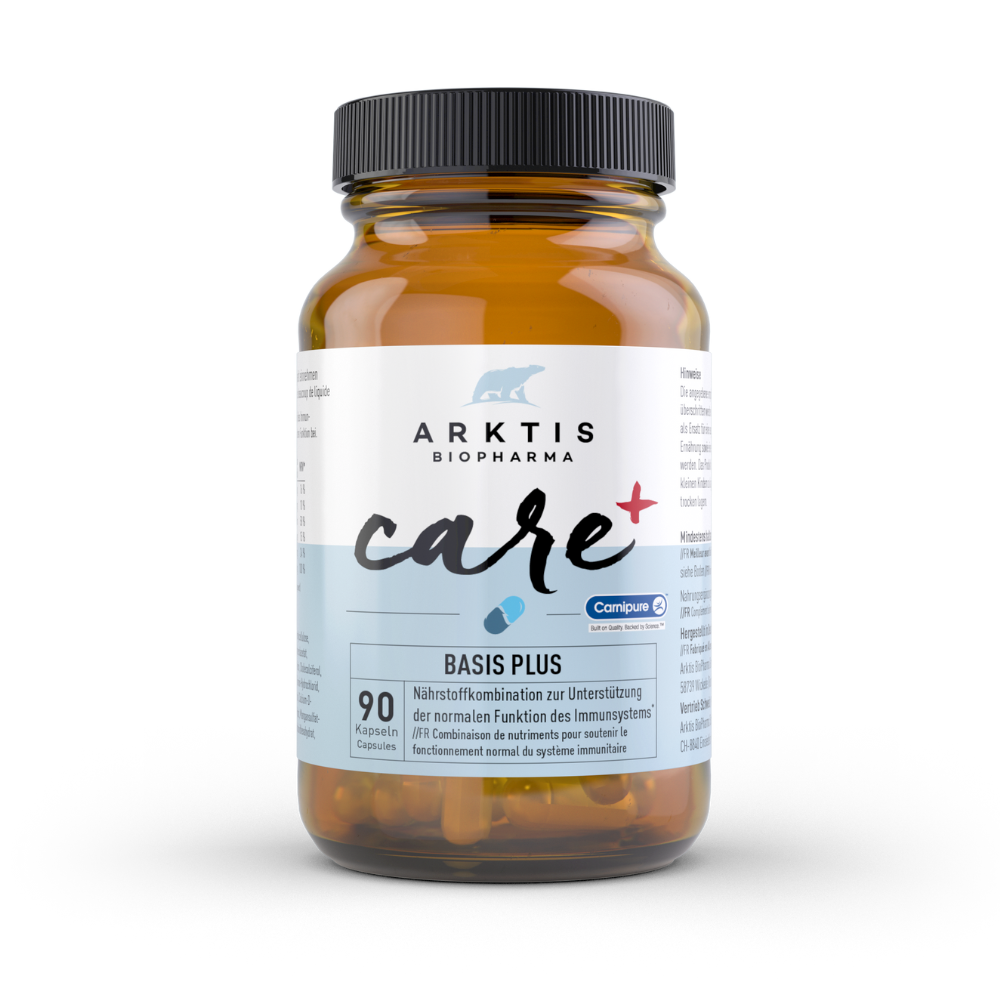Anyone who regularly reads our blog and newsletter will have heard about the intestinal microbiome, as the intestinal flora is a much-discussed topic for us. To mark International Oral Health Day, we would like to take this opportunity to explain the oral microbiome.
moreThe oral microbiota
The human body is home to more microbes than we have body cells. Microbes are not only our constant companions, but we live in symbiosis with them. In fact, the mouth is one of the most colonized areas of our body and probably harbors more than 600 different species of bacteria (1). A balanced oral microbiota protects the mouth from infection and helps to maintain oral health (2). However, factors such as inadequate oral hygiene, dietary habits, smoking, immunodeficiency and ageing can easily unbalance the oral flora (3,4,5).
Oral homeostasis
The majority of oral microbial species exist within a complex multispecies structure known as oral biofilm (dental plaque). The development of oral biofilms is initiated by the attachment of pioneer species to salivary proteins and glycoproteins that bind to tooth enamel. In healthy individuals, the oral biofilm is dominated by commensal bacteria that maintain homeostasis through intricate interactions with host immunity and other microorganisms.
Early colonizers of the mouth are commensal Streptococcus species. These early colonizers are able to bind to the tooth surface, preventing colonization by other bacteria through the production of bacteriocins, hydroperoxide and the secretion of basic substances. In a healthy mouth, commensal streptococci dominate.
Later, other species colonize the initial streptococcal biofilm. This results in a mature biofilm with a relatively stable community in which the various commensal microbial species coexist.
Oral dysbiosis
The disruption of homeostasis known as dysbiosis is associated with a variety of diseases, including dental caries, gingivitis, increased risk of oral cancer and, most commonly, periodontitis.
Periodontitis is a chronic inflammatory disease of the periodontium - the tissue that surrounds and supports the teeth. It affects 10-15% of adults and is the most common cause of tooth loss worldwide. Susceptibility is influenced by host genotype, effects of stress, diet and associated behaviors, including smoking. It is caused by a synergistic and dysbiotic polymicrobial biofilm community, with key pathogens such as Porphyromonas gingivalis initiating the disruption of tissue homeostasis.
In a dysbiotic oral microbiome, the host immune system is chronically activated. Pro-inflammatory mediators, such as cytokines and inflammatory prostaglandins, influence the functions and activities of white blood cells and bone cells, leading to the destruction of the periodontium that is characteristic of chronic periodontitis. However, the effects of a disturbed oral microbiome go far beyond the mouth. It has also been linked to systemic diseases, such as cardiovascular diseases and even pregnancy complications. (6,7).
Much of this damage is reversible if the pathogenic communities are removed and homeostasis is restored. There are ways to analyze the oral microbiome. It is best to ask your dentist or dental hygienist about this.
Even without knowing the exact composition of your oral microbiome, there is much you can do to ensure or help restore a healthy balance of microbes in your mouth. Oral health can be improved through diet and lifestyle, but the input of a trusted dentist and dental hygienist is essential, as is a thorough daily oral care regimen.
Oral hygiene tips
Here are the four most important tips:
-
Stop smoking
Smoking significantly disrupts the homeostasis of oral flora and can even trigger the formation of oral cancer.
-
Take regular care of your teeth and gums
Dental hygiene is of the utmost importance when it comes to avoiding or reducing oral dysbiosis. Brushing your teeth at least twice a day, using dental floss or interdental brushes and routinely visiting a dental hygienist are essential to limit damage to the gum lining. This will also destroy biofilm and reduce pockets that provide niches for pathogenic bacteria.
-
Eat real, healthy foods
Diet plays an important role in maintaining a healthy bacterial balance in the mouth. A diet rich in prebiotic fiber, polyphenols, healthy fats, fat-soluble vitamins such as A, D, E and K, minerals such as calcium and magnesium, and low amounts of processed carbohydrates, trans fats and sugars all contribute to the balance of bacterial communities in the oral cavity.
-
Avoid sweets
Eating sweets contributes to an overly acidic environment in the mouth. If you snack too often, the oral pH may not have enough opportunity to normalize between meals. The acid attacks tooth enamel, can accelerate the progression of tooth decay and lead to bacterial dysbiosis. Taking breaks between meals is also beneficial for gut health, so it would be best not to snack at all. If you are really hungry - e.g. because you are a commuter and the time between lunch and dinner is very long - make sure that your snacks contain at least no sugar and simple carbohydrates.

These are four of the most important measures you can take to protect your oral microbiota.
--
- Paster, B., et al. (2001) Bacterial diversity in human subgingival plaque. Journal of bacteriology 183:3770-83
- Devine, D., et al. (2009) Prospects for the development of probiotics and prebiotics for oral applications. Journal of Oral Microbiology 1:1
- Hasslöf, P., et al. (2013) Early intervention with probiotic Lactobacillus paracasei F19 has no long-term effect on caries experience. Caries Res. 47:559-65
- Killian, M., et al. (2016) The oral microbiome - an update for oral healthcare professionals. Br Dent J. 221(10):657-666
- Marsh, P. (2006) Dental plaque as a biofilm and a microbial community - implications for health and disease. BMC Oral Health 6 Suppl 1:S14
- Beck, J., et al. (2005) Systemic effects of periodontitis: epidemiology of periodontal disease and cardiovascular disease. J Periodontol 76:2089-100
- Xiong, X., et al. (2006) Periodontal disease and adverse pregnancy outcomes: a systematic review. Brit J Obstet Gynaecol 113:135-43
















